Address
304 North Cardinal
St. Dorchester Center, MA 02124
Work Hours
Monday to Friday: 7AM - 7PM
Weekend: 10AM - 5PM
Address
304 North Cardinal
St. Dorchester Center, MA 02124
Work Hours
Monday to Friday: 7AM - 7PM
Weekend: 10AM - 5PM
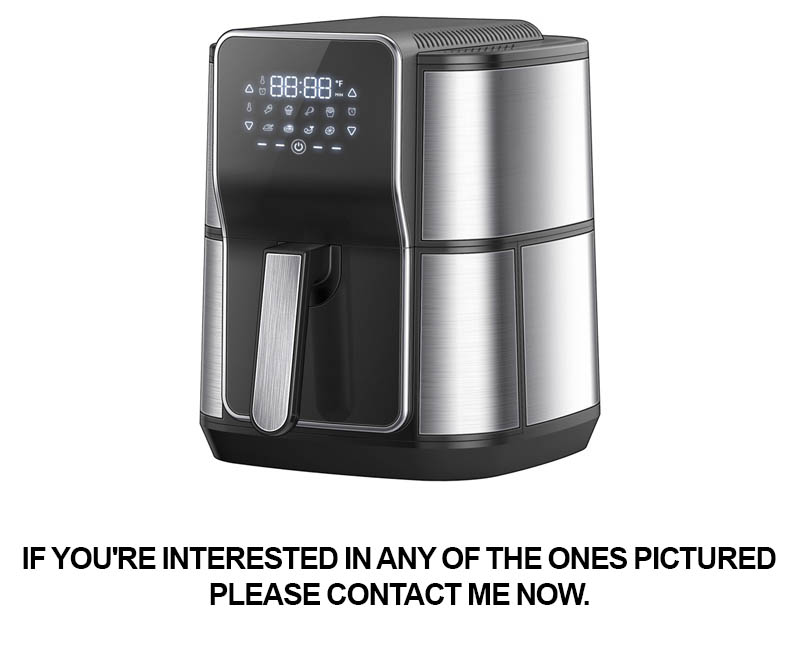
As the culinary landscape evolves, commercial air fryers have emerged as a game-changer in the kitchen, offering a healthier and more efficient alternative to traditional frying methods. This transformation hasn’t just sparked a revolution in the way we cook; it’s also led to a fascinating journey in the evolution of commercial air fryer factories. These factories, at the heart of this innovation, are not just manufacturing equipment; they’re shaping the future of commercial cooking. Let’s delve into the intricacies of these factories, the technology that powers their machines, and the innovative designs that are reshaping the industry. We’ll also explore the challenges faced by these factories and how they’re navigating them, as well as peek into the future of commercial air fryers through case studies of their success stories.
The Air Fryer Phenomenon has swept through the culinary world, transforming how we think about cooking and eating. These nifty kitchen gadgets have not only found their way into home kitchens but have also become a game-changer in commercial settings. Let’s delve into why air fryers have become such a sensation.
Once confined to the realm of deep-fat frying, the concept of cooking with little to no oil has gained traction. Air fryers use rapid air circulation to cook food, creating a crispy outer layer while keeping the inside tender and juicy. This innovative approach to cooking has sparked a revolution in the way we perceive health and flavor.
The convenience factor cannot be overstated. Air fryers are compact, easy to use, and require minimal cleanup. They’ve become a staple in busy households and on-the-go lifestyles, where quick and healthy meals are a priority. Chefs and restaurateurs have also embraced them, recognizing the potential to offer customers a healthier option without sacrificing taste.
In the commercial realm, air fryers have become a favorite among foodservice operators. Their ability to cook a variety of foods—french fries, chicken, fish, and even desserts—has made them a versatile addition to any kitchen. The reduced need for oil means less mess and a more sustainable operation, which is a win for both the environment and the bottom line.
The technology behind air fryers is quite remarkable. A fan circulates hot air around the food at high speeds, creating a barrier of hot air that cooks the food from all sides. This method is much more efficient than traditional frying, which requires submerging the food in oil. The result is a lighter, healthier version of fried foods that still satisfies the craving for crunch and flavor.
One of the key reasons for the air fryer’s meteoric rise is its health benefits. By using significantly less oil, air fryers help reduce the calorie and fat content of fried foods. This has made them a favorite among health-conscious consumers and those looking to manage their dietary intake. Restaurants that offer air-fried options are often seen as more health-forward, which can attract a broader customer base.
Moreover, the air fryer trend has sparked a wave of creativity in the food industry. Chefs are experimenting with new recipes and techniques, pushing the boundaries of what can be cooked in an air fryer. From gourmet snacks to complex dishes, the possibilities seem endless. This has not only enriched the culinary landscape but has also opened up new revenue streams for businesses.
The commercial air fryer market is also evolving rapidly. As technology advances, manufacturers are introducing new features and capabilities. Some models now come with programmable settings, allowing for precise temperature control and cooking times. Others are designed to be more energy-efficient, further appealing to environmentally conscious operators.
Another factor contributing to the air fryer phenomenon is the rise of social media and food influencers. These platforms have played a significant role in popularizing the trend. With countless recipes and cooking videos shared online, air fryers have become a must-have kitchen gadget for anyone looking to impress their followers or simply enjoy delicious, healthier meals at home.
In conclusion, the air fryer phenomenon is a testament to the power of innovation and consumer demand. Its ability to offer a healthier, more convenient, and versatile cooking experience has made it a staple in both home and commercial kitchens. As the market continues to grow, we can expect even more exciting developments and new ways to enjoy our favorite fried foods with a fraction of the guilt.

The evolution of commercial air fryer factories has been a fascinating journey, marked by leaps in technology and a deepening understanding of the market’s needs. From the early days of experimental units to the sophisticated machines we see today, the story is one of innovation and adaptation.
In the beginning, air fryers were seen more as a novelty than a practical commercial solution. These early models were often bulky and limited in their capabilities, struggling to replicate the taste and texture of traditional fried foods. However, the concept of using hot air to cook food with minimal oil was intriguing, and it laid the groundwork for future advancements.
As the years went by, engineers and designers began to refine the technology. The introduction of convection fans allowed for more even distribution of heat, which in turn improved the cooking process. This was a significant step, as it meant that the food cooked more consistently and efficiently.
The rise of health consciousness also played a pivotal role in the evolution of commercial air fryer factories. With the growing awareness of the health risks associated with deep-frying, there was a demand for a healthier alternative. This shift in consumer preference pushed manufacturers to develop air fryers that could produce delicious, crispy foods with a fraction of the oil.
One of the key turning points came with the integration of smart technology. Modern commercial air fryers are equipped with digital controls that allow for precise temperature and time settings. This not only ensures that the food is cooked to perfection but also makes it easier for chefs to manage their cooking processes.
The design of commercial air fryers has also seen significant changes. Early models were often large and unwieldy, taking up considerable space in kitchens. Today, manufacturers are focusing on creating compact, space-saving units that can be easily integrated into existing kitchen layouts. This has been particularly important in fast-food and quick-service restaurants where every square inch counts.
Another major development has been the focus on energy efficiency. As businesses strive to reduce their environmental footprint and cut down on operational costs, energy-efficient appliances have become a priority. Commercial air fryer factories have responded by producing fryers that consume less power while still delivering high-performance cooking results.
Customization has also become a key aspect of the commercial air fryer market. Factories now offer a range of models with different capacities, cooking temperatures, and features to cater to various business needs. This flexibility allows restaurants and commercial kitchens to choose the perfect fryer for their specific requirements.
Safety has not been overlooked either. Modern commercial air fryers are designed with safety features like automatic shut-offs and cool-to-the-touch exteriors. These innovations not only protect the staff but also ensure that the fryers can be used around children and the elderly without concern.
In recent years, there has been a surge in the use of sustainable materials in the construction of commercial air fryers. This not only reduces the environmental impact but also appeals to businesses looking to align their practices with green initiatives.
The evolution of commercial air fryer factories is a testament to how technology can transform an industry. What started as a quirky idea has blossomed into a multi-faceted market that offers a healthier, more efficient, and versatile cooking solution. As the industry continues to evolve, we can expect to see even more innovative features and designs that will further revolutionize the way we cook and eat.
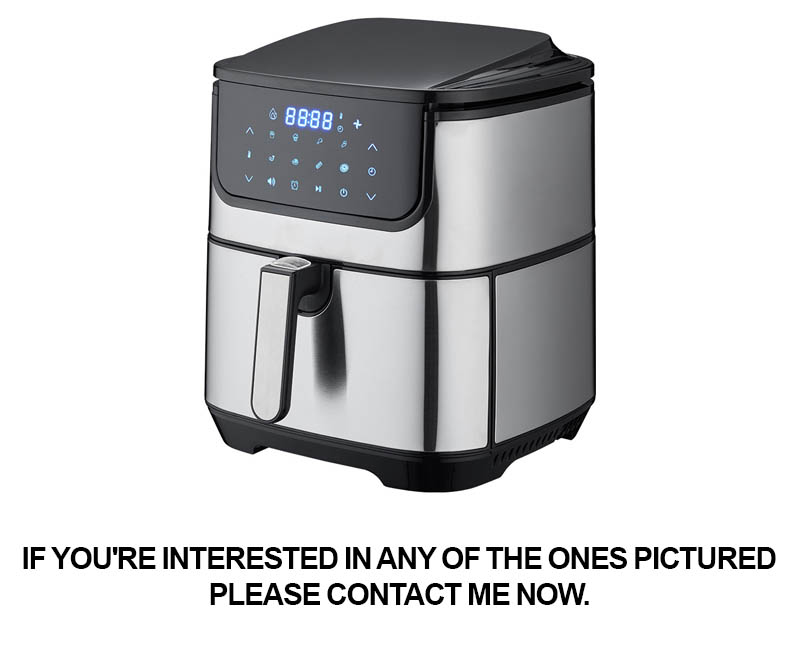
The commercial air fryer market has experienced a surge in demand, fueled by a perfect storm of consumer trends, technological advancements, and the ever-growing awareness of health and wellness. This dynamic landscape is shaped by a multitude of factors, each playing a crucial role in the market’s trajectory.
Consumers are increasingly gravitating towards healthier eating habits, and air fryers have become a popular choice for those looking to enjoy fried foods without the guilt. This shift in consumer preference has significantly impacted the market dynamics, pushing manufacturers to innovate and meet these evolving demands.
The rise of health consciousness has not only influenced the types of products being developed but also the way these products are marketed. Manufacturers are now emphasizing the health benefits of air fryers, such as lower oil usage and the ability to produce crispy, golden-brown results. This focus on health has opened up new avenues for growth in the commercial air fryer market.
Geographically, the market is witnessing a global spread, with regions like North America and Europe leading the charge. In North America, the busy lifestyle and a preference for convenience foods have made air fryers a staple in many commercial kitchens. Meanwhile, in Europe, the emphasis on wellness has accelerated the adoption of air fryers, particularly in health-focused restaurants and cafes.
The Asia-Pacific region, however, is a significant growth market, driven by an expanding middle class and a growing interest in health and fitness. Countries like China, Japan, and South Korea are witnessing a surge in demand for commercial air fryers, as they become a go-to option for businesses looking to offer healthier fried food alternatives.
The market is also witnessing a shift in the way products are sold. E-commerce has become a key channel for commercial air fryer sales, with an increasing number of manufacturers setting up online stores and leveraging social media platforms to reach a wider audience. This digital transformation has not only made it easier for consumers to purchase products but has also opened up new opportunities for market research and customer engagement.
Innovation in technology has been a cornerstone of the market’s growth. Advanced features such as programmable settings, automatic shut-off functions, and even wireless connectivity are becoming standard in new models. These technological upgrades are not only enhancing the user experience but also driving up the average selling price of commercial air fryers.
The competitive landscape is becoming more sophisticated as well. Established players are continuously expanding their product lines, while new entrants are bringing fresh ideas and technologies to the table. Partnerships and collaborations are on the rise, with manufacturers seeking to leverage each other’s strengths to create more comprehensive solutions for their customers.
Regulatory changes are also influencing the market dynamics. For instance, the introduction of stricter food safety regulations in some regions has prompted manufacturers to focus on the hygiene and durability of their products. This focus on compliance is ensuring that the market remains robust and reliable.
Lastly, the sustainability aspect is gaining traction. As environmental concerns grow, more manufacturers are exploring eco-friendly materials and production processes. This trend is likely to influence the market in the long term, as sustainability becomes a key criterion for both businesses and consumers.
In summary, the market dynamics of the commercial air fryer industry are shaped by a complex interplay of consumer behavior, technological advancements, geographical distribution, e-commerce, competitive strategies, regulatory changes, and sustainability concerns. Understanding and navigating these dynamics is crucial for players looking to thrive in this rapidly evolving sector.

Commercial air fryers have emerged as a game-changer in the culinary world, offering a unique blend of efficiency and health benefits that have captivated the market. Here’s a closer look at what sets these fryers apart:
Innovative Cooking TechnologyThe core USP of commercial air fryers lies in their innovative cooking technology. These fryers use a combination of hot air and a fan to circulate around the food, creating a crispy outer layer while keeping the inside tender and juicy. This method drastically reduces the amount of oil needed compared to traditional deep-frying, making it a healthier option for customers.
Energy EfficiencyCommercial air fryers are not just healthier; they are also energy-efficient. The technology allows for quicker cooking times, which translates to lower energy consumption. This is particularly appealing to businesses looking to reduce their operational costs and environmental footprint.
Versatility in CookingOne of the standout features of commercial air fryers is their versatility. They can cook a wide range of dishes, from French fries and fried chicken to fish and vegetables. This flexibility allows chefs and kitchen staff to offer a diverse menu without the need for multiple cooking appliances.
Health BenefitsThe health-conscious consumer is a key driver in the market, and commercial air fryers cater to this segment perfectly. By using up to 80% less oil than traditional frying methods, these fryers help reduce the calorie count and fat content of fried foods. This makes them an attractive choice for health-focused eateries and foodservice establishments.
Customizable Cooking SettingsCommercial air fryers often come with a variety of cooking settings and temperature controls. This allows for precise cooking, ensuring that each dish is cooked to perfection. The ability to adjust cooking times and temperatures is a significant USP, as it gives chefs the control they need to create a wide array of recipes.
Reduced Kitchen SpaceWith their compact design, commercial air fryers take up less kitchen space than traditional fryers. This is a crucial advantage in busy commercial kitchens where every square inch counts. The ability to save space without compromising on cooking capacity is a compelling reason for businesses to invest in these fryers.
Low MaintenanceMaintenance is often a concern in commercial kitchens, and air fryers address this with their low maintenance requirements. Since they use less oil and have a simpler design, they are less prone to clogs and require less frequent cleaning. This not only saves time but also reduces the likelihood of downtime due to equipment failure.
Cost-Effective OperationThe combination of energy efficiency and reduced maintenance costs makes commercial air fryers a cost-effective choice for businesses. The long-term savings on energy and maintenance can be substantial, making the initial investment worthwhile.
Crispy and Delicious ResultsDespite using less oil, commercial air fryers deliver crispy and delicious results. The technology ensures that the food is evenly cooked and crisp on the outside, while maintaining its natural flavors and textures. This consistency in quality is a major draw for customers and helps maintain a positive reputation for the establishment.
Customizable Cooking TimesCommercial air fryers often come with programmable cooking times, allowing for even more precision in the cooking process. This feature is particularly beneficial for establishments that serve a high volume of orders, as it helps streamline the kitchen workflow and ensures consistency across all dishes.
In conclusion, the unique selling points of commercial air fryers—innovative cooking technology, energy efficiency, versatility, health benefits, customizable settings, space-saving design, low maintenance, cost-effectiveness, delicious results, and programmable cooking times—make them a compelling choice for any commercial kitchen looking to improve its operations and cater to the health-conscious consumer.
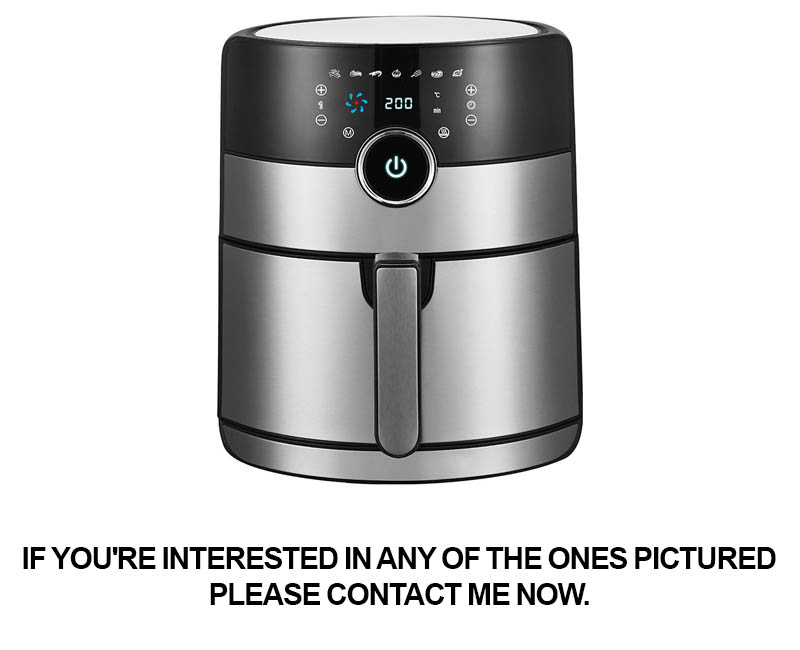
Nestled within the heart of industrial parks and bustling manufacturing zones, commercial air fryer factories are the silent workhorses of the kitchen appliance industry. These factories are where innovation meets precision, and the art of cooking is transformed into a high-tech science. Let’s take a walk through the bustling corridors of one such factory, where every machine and worker plays a crucial role in the production of these game-changing kitchen tools.
The first thing that strikes you as you step into the factory is the sheer scale of the operation. Rows upon rows of machinery hum softly, each one meticulously designed to handle specific tasks in the assembly line. The air is filled with the scent of fresh plastics and the occasional whiff of oil, a testament to the fact that these fryers are not just assembled but also tested for quality and durability.
At the heart of the factory, the raw materials are processed and transformed. Aluminum sheets, often sourced from recycled materials, are cut and bent into the shape of fryer baskets. These sheets are then polished to a shine, ensuring that the finished product is not only functional but also visually appealing.
The cutting-edge CNC machines are the stars of the show. They precisely cut the metal sheets into the intricate shapes required for the fryer’s components. The precision of these machines is crucial, as even the smallest error can affect the performance and safety of the air fryer.
Once the components are cut, they are moved to the welding station. Here, skilled technicians use robotic arms to join the pieces together, ensuring that the seams are tight and leak-proof. The welding process is not just about joining metal; it’s about creating a bond that can withstand the heat and pressure of commercial use.
As the components come together, they are inspected by a team of quality control specialists. These inspectors use magnifying glasses to examine every seam, looking for any signs of imperfections. Defective parts are immediately set aside for rework, ensuring that only the highest quality components proceed to the next stage.
The next step is the painting and coating process. The fryers are first primed with a layer of anti-corrosive paint, which is then baked onto the surface at high temperatures. This creates a durable and attractive finish that will withstand the rigors of commercial kitchens.
The electronics are carefully installed next. This includes the heating elements, fans, and control panels. Each electronic component is tested individually before being placed into the fryer, ensuring that everything works in harmony.
The assembled fryers are then placed in a testing chamber. Here, they are subjected to a series of rigorous tests, including temperature control, fan speed, and durability. The fryers are heated to high temperatures and then cooled down rapidly to simulate the intense conditions of a busy kitchen. Only those that pass these tests are deemed ready for the next stage.
The final touches are added with the installation of handles, power cords, and user manuals. Each fryer is then packaged with care, ensuring that it arrives at its destination in perfect condition.
Throughout the factory, there’s a sense of precision and pride. The workers are well-trained and understand the importance of their roles in the production process. They take great care in their work, knowing that the end result is not just a product but a tool that will help chefs around the world create delicious dishes with less oil and more health.
As you exit the factory, you can’t help but feel a sense of awe at the complexity and sophistication of the process. The commercial air fryer factory is a marvel of modern engineering, where the latest technology meets the demands of the culinary world, producing a product that is not just innovative but essential for any modern kitchen.
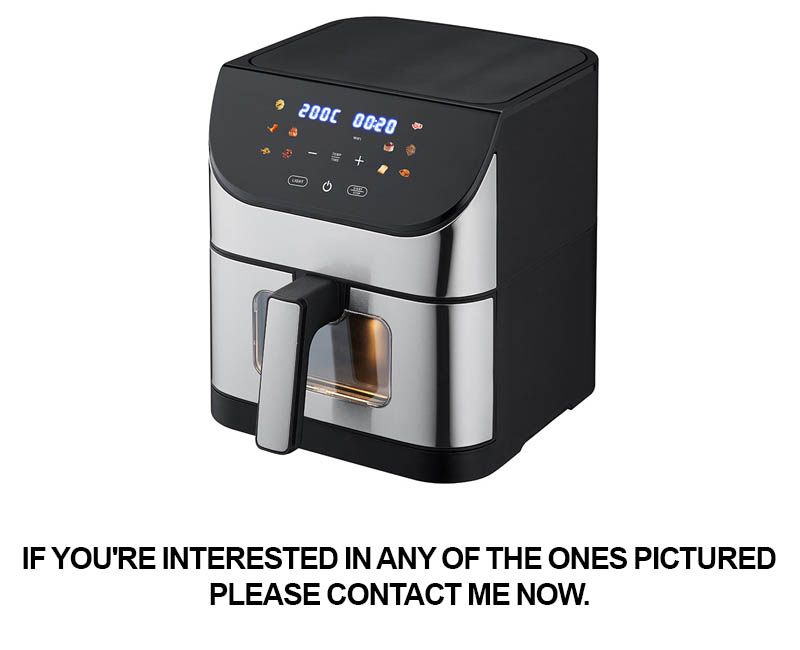
The intricate dance of heat and air is the heart of the commercial air fryer’s technology. These machines are designed to mimic the frying process, but with a twist that’s healthier and more efficient. Let’s delve into the fascinating technology that powers these innovative appliances.
The air fryer’s core is a fan that whirs continuously, circulating hot air around the food. This process is known as “rapid air technology,” and it’s what sets these fryers apart from traditional deep fryers. Instead of immersing food in oil, the air fryer uses a combination of hot air and a small amount of oil (if desired) to achieve a crispy outer layer while keeping the interior tender and juicy.
One of the key components of this technology is the heating element. These elements are often made of ceramic or metal and are designed to reach and maintain high temperatures quickly. The precise temperature control is crucial, as it ensures that the food cooks evenly without burning or becoming too dry.
The fan plays a pivotal role in the air fryer’s performance. It’s designed to move air at a high velocity, ensuring that the hot air circulates around the food uniformly. This is why the cooking basket is often placed in the center of the machine, allowing the air to flow in all directions.
Another important aspect of the technology is the oil reservoir. While many air fryers are designed to be oil-free, some models include a small oil compartment. This oil not only adds flavor but also helps to prevent sticking and ensures that the food gets that perfect crispy texture. The amount of oil used is significantly less than traditional frying methods, making it a healthier option.
The control panel is the brain of the air fryer, allowing users to set specific cooking times and temperatures. Modern air fryers come with pre-programmed settings for a variety of foods, from chicken to vegetables, making it easy for even the most inexperienced cooks to achieve professional results.
Inside the machine, there are often several heating elements that work together to create the perfect cooking environment. These elements can be adjusted to ensure that the food cooks at the desired temperature and for the correct amount of time. The technology also includes safety features, such as automatic shut-off, to prevent overheating and potential fires.
The design of the cooking basket is also a key factor in the air fryer’s performance. It’s often made of non-stick material to prevent food from sticking and to make cleaning easier. The basket is usually designed with a grid pattern that allows air to flow freely around the food, ensuring even cooking.
One of the most remarkable aspects of the technology is its versatility. Air fryers can be used to cook a wide range of foods, from snacks to main dishes. They can also be used to reheat leftovers, making them a versatile addition to any kitchen.
In terms of energy efficiency, air fryers are a clear winner. They use less energy than traditional deep fryers and can often cook food in a fraction of the time. This not only saves money on electricity bills but also reduces the carbon footprint.
The technology behind commercial air fryers is a marvel of modern engineering. It combines the convenience of a deep fryer with the health benefits of baking and grilling. From the precise heating elements to the efficient fan system, every aspect of these machines is designed to deliver delicious, crispy food with minimal oil and maximum efficiency.
The air fryer’s technology is not just a passing trend; it’s a testament to human ingenuity and the continuous pursuit of healthier, more sustainable cooking methods. As the world becomes more health-conscious and environmentally aware, the technology behind these machines is likely to become even more sophisticated, offering even more options for home and commercial kitchens alike.

In the ever-evolving world of commercial kitchen appliances, innovation in design is a key driver behind the success of products like air fryers. Here’s a glimpse into how these designs are shaping the future of kitchen technology:
The sleek, modern aesthetic of commercial air fryers is not just a superficial feature; it’s a reflection of the user experience they aim to provide. These appliances are designed to blend seamlessly into any kitchen environment, from high-end restaurants to busy fast-food chains.
One of the standout innovations in design is the integration of touchscreens and digital interfaces. These user-friendly controls allow chefs and kitchen staff to easily adjust cooking times, temperatures, and settings, ensuring consistent results every time. The intuitive nature of these interfaces has significantly reduced the learning curve for new staff members.
The size and shape of commercial air fryers have also been reimagined to cater to different kitchen layouts and requirements. Compact models are perfect for limited counter space, while larger units can handle high-volume cooking in bustling kitchens. The modular design of some models even allows for easy replacement of parts, ensuring longevity and reducing downtime.
Safety features have been a major focus in the design of commercial air fryers. With features like automatic shut-off and overheat protection, these machines offer peace of mind to operators. The inclusion of non-stick surfaces and easy-to-clean components means less time spent on maintenance and more time on cooking.
In terms of energy efficiency, the design of commercial air fryers has made significant strides. The use of advanced heating elements and insulation ensures that heat is contained and utilized effectively, reducing energy consumption and lowering operational costs. This eco-friendly approach is not only beneficial for the environment but also for the bottom line of businesses.
Another innovative aspect is the versatility of these fryers. Many models come with adjustable baskets and racks, allowing for a variety of cooking methods, from frying to roasting and baking. This flexibility means that a single air fryer can replace multiple appliances, saving space and reducing the complexity of kitchen operations.
The design of commercial air fryers also considers the health and wellness of consumers. With the growing awareness of dietary concerns, these fryers offer a healthier alternative to traditional deep-fat frying. The ability to prepare crispy, golden foods with a fraction of the oil has made them a favorite among health-conscious customers.
In the realm of aesthetics, manufacturers have been experimenting with various colors and finishes to appeal to different tastes and branding requirements. From classic white and stainless steel to bold reds and blues, the design of commercial air fryers is now as much about personalization as it is about functionality.
Lastly, the integration of smart technology is a testament to the innovation in design. Air fryers can now be connected to kitchen management systems, allowing for remote monitoring and control. This connectivity not only enhances the operational efficiency of kitchens but also opens up new possibilities for data analysis and predictive maintenance.
In conclusion, the design of commercial air fryers has evolved to meet the demands of modern kitchens. From user-friendly interfaces to energy-efficient heating systems, these appliances are not just cooking tools but also symbols of the innovation and commitment to excellence that drives the commercial kitchen industry forward.
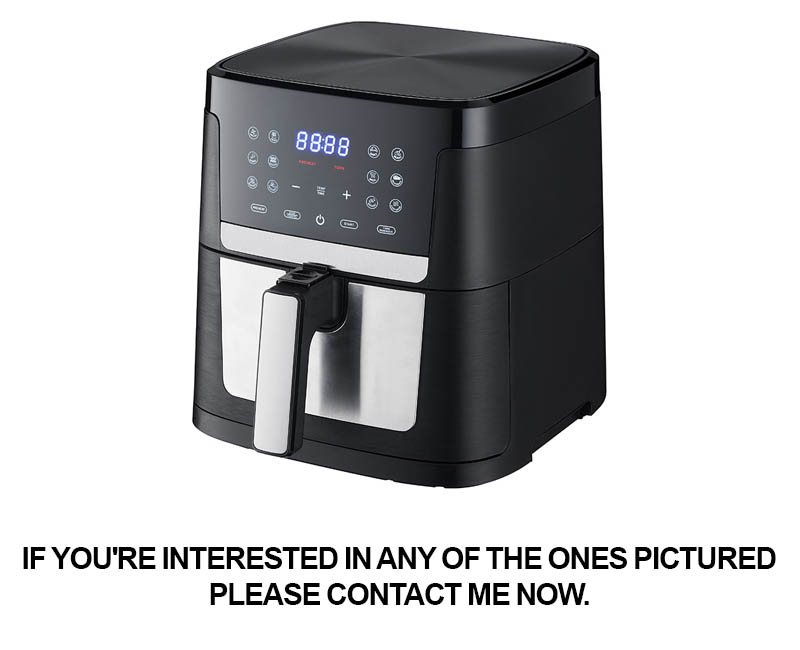
Navigating the complexities of the commercial air fryer market, manufacturers are constantly striving to meet the evolving demands of chefs and kitchen operators. From maintaining consistent quality to ensuring safety and efficiency, here are some of the challenges they face and the innovative solutions they’ve developed:
The Challenge of Consistency- Achieving uniformity in cooking temperatures and times can be a significant challenge in large-scale production.- Solution: Advanced temperature sensors and automated control systems are being integrated into fryer designs to maintain precise cooking parameters.
Energy Efficiency Concerns- The energy consumption of commercial air fryers is a major concern for businesses looking to reduce their carbon footprint and operational costs.- Solution: Manufacturers are focusing on more energy-efficient motors and improved insulation to minimize power usage and heat loss.
Durability and Maintenance- Air fryers are subject to heavy use in commercial kitchens, which can lead to wear and tear.- Solution: High-quality materials and robust construction are being employed to ensure longer lifespans and reduce the need for frequent repairs or replacements.
Health and Safety Regulations- With the growing health consciousness, there’s a heightened focus on food safety and the potential hazards of frying.- Solution: Implementing safety features like auto shut-off functions and child locks to prevent accidents and adhere to strict health codes.
Designing for a Variety of Kitchens- Not all commercial kitchens are the same size or have the same layout.- Solution: Offering customizable fryer sizes and configurations that can be tailored to different kitchen spaces and requirements.
Environmental Impact- The environmental impact of manufacturing and the disposal of fryers is a growing concern.- Solution: Investing in sustainable materials and developing recycling programs for old fryers to reduce the industry’s environmental footprint.
Cost Management- Balancing quality and cost is a delicate balance for manufacturers, especially when competing in a crowded market.- Solution: Streamlining production processes and sourcing materials from reliable suppliers to keep costs competitive without compromising quality.
Technology Integration- Keeping up with technological advancements can be daunting, as it often requires significant investment.- Solution: Collaborating with technology partners to incorporate the latest innovations into fryer designs without overcomplicating the user experience.
Innovation in Cooking Techniques- As cooking methods evolve, so must the fryers that implement them.- Solution: Research and development teams are continuously exploring new ways to enhance the cooking process, from better temperature control to innovative cooking cycles.
These challenges and the corresponding solutions highlight the dynamic nature of the commercial air fryer industry. Manufacturers are not just creating products; they are solving real-world problems for chefs and kitchen managers, all while keeping an eye on the future of foodservice technology.
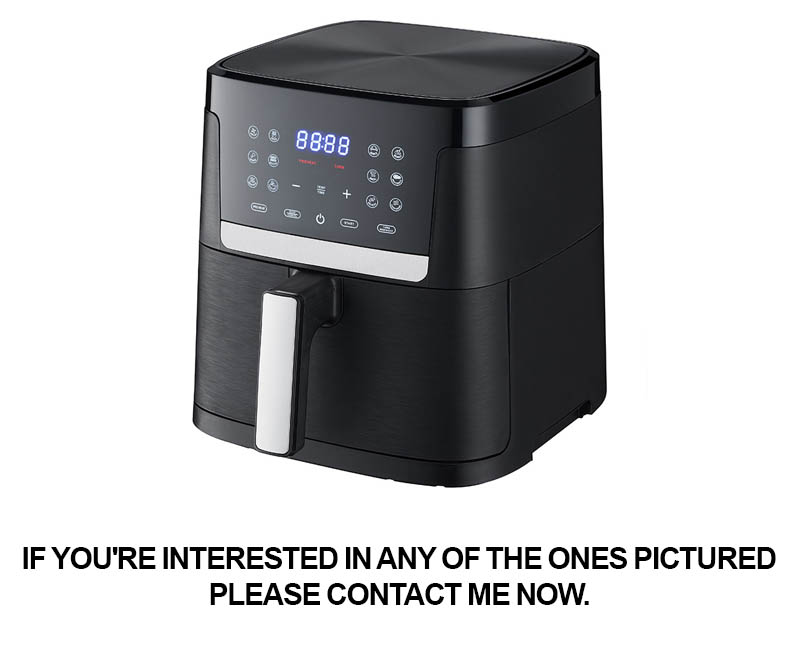
In the rapidly evolving landscape of commercial kitchen appliances, the future of commercial air fryers looks promising and innovative. These appliances, once a niche product, have now become a staple in many professional kitchens. Here’s a glimpse into what the future holds for these versatile machines:
Smart Integration: The next generation of commercial air fryers is expected to feature advanced smart technology. These fryers will be capable of integrating with kitchen management systems, allowing for remote monitoring and control. Imagine a scenario where the fryer can automatically adjust cooking times and temperatures based on the recipe or menu item, ensuring consistency and efficiency.
Energy Efficiency: With the increasing focus on sustainability, the future of commercial air fryers will likely see a push towards even greater energy efficiency. Manufacturers are already exploring the use of energy-saving technologies, and it’s reasonable to assume that these advancements will continue, reducing the operational costs for businesses and their environmental footprint.
Health and Wellness Trends: As consumers become more health-conscious, the demand for healthier cooking options is on the rise. The future of commercial air fryers will see a continued emphasis on reducing oil usage while maintaining flavor and texture. Innovations may include air fryer models that can handle a wider variety of ingredients and cooking techniques, making them a more versatile tool in the commercial kitchen.
Customization and Personalization: One of the most exciting prospects for the future of commercial air fryers is the potential for greater customization. Factories may develop fryers that can be tailored to specific menu items or cooking styles, allowing chefs to create signature dishes with ease. This could involve adjustable fan speeds, heating elements, and even customizable cooking cycles.
Environmental Friendliness: As the world grapples with environmental concerns, commercial air fryers of the future will likely be designed with sustainability in mind. This could include the use of recyclable materials, improved energy consumption, and the ability to use alternative cooking methods that reduce waste and pollution.
Increased Capacity and Output: The future commercial air fryers will likely see an increase in capacity without compromising on efficiency. This will be especially beneficial for busy restaurants and catering services that need to produce large volumes of food quickly. Larger batch sizes could be achieved through innovative design and engineering.
Enhanced Safety Features: Safety is always a top priority in commercial kitchens. The future of air fryers will incorporate enhanced safety features to prevent accidents and ensure peace of mind for chefs and kitchen staff. This could include automatic shut-offs, non-slip bases, and temperature control systems that prevent overheating.
Interactive User Interfaces: Modern technology will likely bring about interactive user interfaces for air fryers. Touchscreen displays and intuitive menus will make it easier for kitchen staff to operate these machines, even without extensive technical knowledge. This could also open up the possibility of creating recipe libraries and providing cooking tips directly through the fryer’s interface.
Warranty and Service: As these appliances become more sophisticated, the importance of reliable service and support will grow. Future commercial air fryers might come with extended warranties and comprehensive service plans, ensuring that businesses can keep their fryers running smoothly for years to come.
Collaboration with Chefs and Kitchen Designers: Manufacturers of commercial air fryers will likely collaborate more closely with chefs and kitchen designers to create appliances that not only perform well but also fit seamlessly into kitchen layouts. This collaboration could lead to innovative solutions that address the unique challenges of various types of kitchens.
The future of commercial air fryers is an exciting blend of technological advancements, environmental consciousness, and culinary innovation. As these machines continue to evolve, they will play a pivotal role in shaping the way food is prepared and enjoyed in commercial kitchens worldwide.
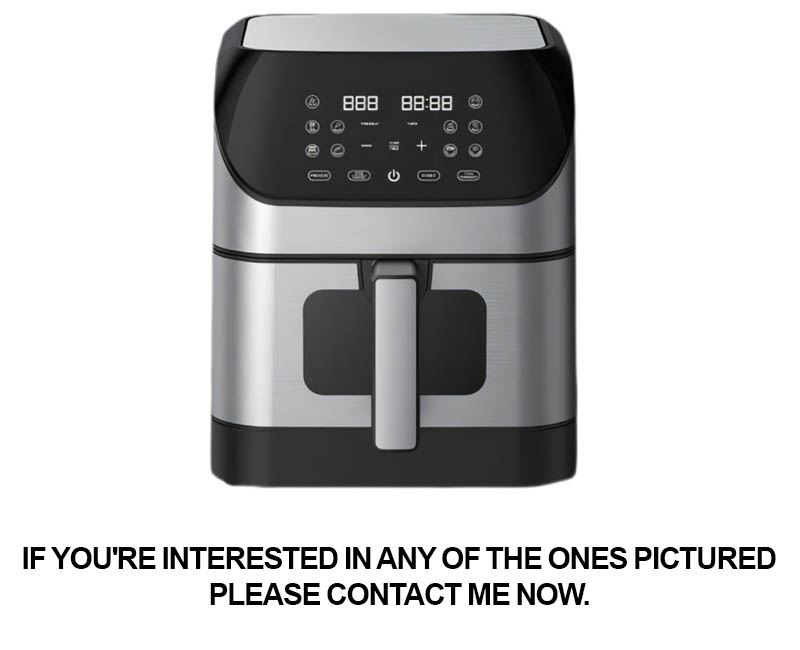
In the bustling heart of the commercial kitchen, the air fryer has emerged as a game-changer, offering restaurateurs and chefs a new way to cook with health and efficiency. Here are some shining examples of how these innovative appliances have transformed the culinary landscape:
The Local Bistro’s TransformationOnce a staple of greasy spoon diners, the local bistro now boasts a menu that includes crispy, golden fried chicken, thanks to their commercial air fryer. The manager, Sarah, explains that the switch has not only reduced their oil consumption by 80% but also increased customer satisfaction with the reduced fat content of their favorite dishes.
The Gourmet Café’s Menu ExpansionThe gourmet café, known for its sophisticated cuisine, found a way to offer indulgent fried foods without compromising on health. By incorporating a commercial air fryer into their kitchen, the café now serves a variety of crispy appetizers and desserts, all with a fraction of the oil. The chef, Michael, credits the air fryer with broadening their menu’s appeal without the usual dietary drawbacks.
The School Lunch Program’s Health InitiativeA school district looking to improve the nutritional value of its lunch program turned to commercial air fryers. The results were impressive: meals with less fat and more flavor, all while maintaining the same level of student excitement. The nutritionist, Emily, notes that the air fryers have helped them meet health guidelines without sacrificing taste.
The Street Food Vendor’s Popularity SurgeA street food vendor, known for his mouth-watering fried snacks, found that his business skyrocketed after investing in a commercial air fryer. The vendor, Juan, says that the healthier option attracted a wider clientele, including those who were previously wary of the high-fat content of traditional fried foods.
The Fine Dining Establishment’s Unique OfferingsA high-end restaurant that specializes in molecular gastronomy has found a unique way to incorporate air frying into their avant-garde dishes. The head chef, Elena, uses the air fryer to create crispy textures that complement their liquid nitrogen and sous-vide techniques. The patrons are delighted by the fusion of old and new cooking methods.
The Community Kitchen’s ImpactA community kitchen aimed at providing nutritious meals for those in need has seen a positive impact from their commercial air fryer. The coordinator, Lisa, explains that the appliance has allowed them to offer a variety of dishes that are both delicious and healthy, ensuring that everyone in the community has access to quality food.
The Health Concierge Service’s Personalized MealsA health concierge service that delivers personalized meal plans to clients has found that their air fryers are a hit. The clients appreciate the ability to enjoy their favorite comfort foods with less guilt, thanks to the healthier cooking method. The service provider, David, notes that the air fryers have become a key component of their success in promoting healthy eating habits.
The Fitness Center’s Café RevampA fitness center’s café has seen a significant boost in sales since adding a commercial air fryer to their kitchen. The café now offers a range of low-fat, high-protein snacks that cater to the fitness community’s needs. The café manager, Alex, says that the air fryer has become a favorite among members for its ability to provide quick, healthy, and satisfying meals.
The Vegan Bistro’s Creative ApproachA vegan bistro that prides itself on offering innovative plant-based dishes has found a creative use for their air fryer. The chef, Jamie, uses it to create crispy textures for vegan “chicken” wings and “fries,” which have become a hit with both meat-eaters and vegetarians. The air fryer has opened up a world of possibilities for the bistro’s menu.
The Sports Bar’s Fan FavoriteA sports bar that needed to offer a healthier alternative to traditional fried snacks has turned to the commercial air fryer. The result is a fan favorite: crispy, golden onion rings that are a healthier option for those watching games. The bar manager, Tom, says that the air fryer has become an essential part of their bar’s offerings, appealing to health-conscious patrons without compromising on taste.